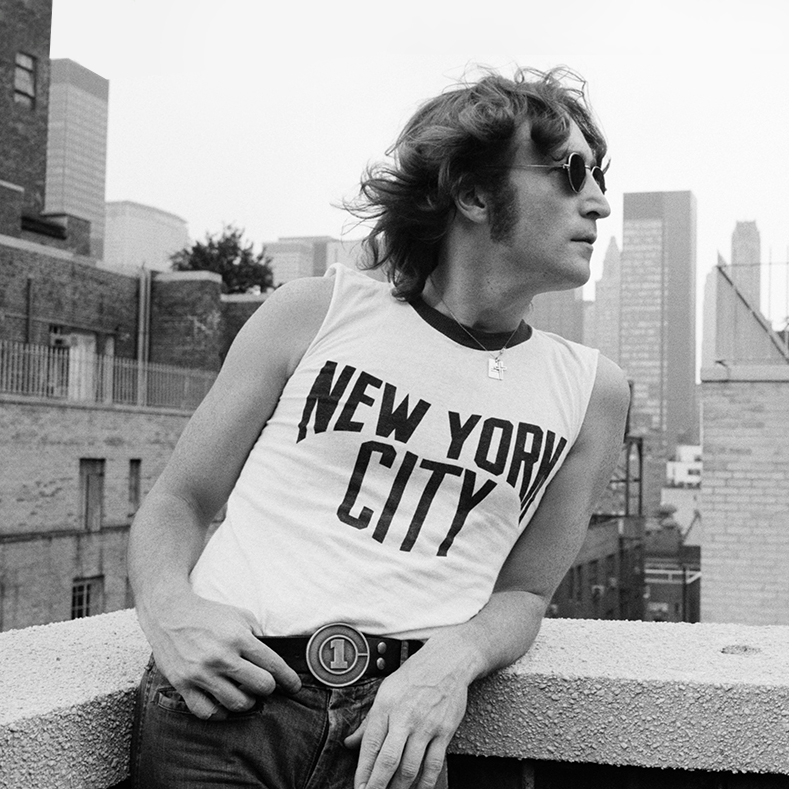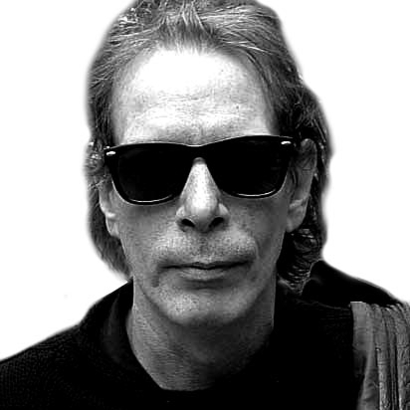When I interviewed the rock ’n’ roll photographer Bob Gruen for my book Please Kill Me, he told me that John Lennon had seen a U.F.O. in 1974.
I put Bob’s Lennon-U.F.O. story to the side, since I knew it would only bring about more ridicule, and rock ’n’ roll, and especially punk rock, had already been ridiculed to death in the mainstream media. So I let it go.
But a few months ago, when U.S. Air Force pilots were testifying before Congress about U.F.O.’s—or U.A.P.’s (“Unidentified Anomalous Phenomena,” as the government had rebranded them—and even showing videos of their encounters with “flying saucers,” I decided to call Bob.

“It was August 23, 1974, and I was having dinner in Brooklyn that night,” he told me. “When I checked in with my answering service, the lady told me, ‘Dr. Winston called and left a number.’” As Bob knew, “Dr. Winston O’Boogie” was a pseudonym Lennon used with his close friends.
“John was very excited when I called him back,” Bob recalled. “He said he had just seen the flying saucer that night and that May Pang had taken pictures of it. He wanted me to develop the roll, because May had used a very special kind of film that I had given her that works in low light—a very sensitive film, much more sensitive than Tri-X, which required special developing.
“I had given the film to May,” Bob continued, “because she said she was taking pictures of John in the recording studio. Musicians generally worked in the equivalent of candlelight, and it was very difficult to take pictures unless you had a really sensitive film. So this film was the most sensitive Kodak made. It was called ‘Kodak High Speed Recording film.’”

In mid-1973, Lennon had separated from his wife Yoko Ono and begun an affair with Pang, his 23-year-old secretary, during his 18-month “Lost Weekend” period. By the following August, he had been sober for several months.
Bob went to Lennon’s penthouse apartment on East 52nd Street, where he was living with Pang, to pick up the film. “John said that he had been sitting in the living room and that he saw some lights. At first, he thought it was some lights from a store, but then he realized that he’s in the penthouse and there’s no stores around. So he stepped outside.
“That’s when he saw the flying saucer,” Bob told me. “He said it looked just like a science-fiction movie where there was a big round object floating in the sky with colored lights circling around the edge.”
“John said that he had been sitting in the living room and that he saw some lights. At first, he thought it was some lights from a store, but then he realized that he’s in the penthouse and there’s no stores around.”
He looked out from the top of his 13-story apartment house on a couple of surrounding brownstones, and one taller building.
“John said the U.F.O. was floating between his building and the taller one, where Greta Garbo lived, and he said it didn’t make any sound,” Bob explained.
“He started waving his arms and yelling, ‘Hey, there’s a flying saucer!,’” Bob said with a laugh. “May got her camera and came out and started taking pictures. At one point, John said he was yelling, ‘Take me with you!’ I think he said that he was naked.
“I can imagine John standing naked on the roof screaming, ‘There’s a flying saucer,’ and all of the neighbors ignoring him,” Bob said, chuckling. “But he was very certain that he saw it, and May Pang saw it. John was completely sober that night, and May never took a drink or a drug in her life.”

Bob took May’s film back to his apartment in the Westbeth Artists Housing complex that night and developed it with two rolls of his own. But when he checked on the developing process, both of his rolls were perfectly intact, while May’s film was completely blank.
“The next day I went back to John’s apartment with the blank film, and I asked May if she was sure that she had loaded the film properly,” Bob explained. “May was sure the film was moving through the camera, but the pictures they took of the flying saucer were completely blank.”
When Bob told Lennon to call the police and newspapers to report it, Lennon responded, “Yeah, right. I’m not going to call up the newspaper and say, ‘This is John Lennon, and I saw a flying saucer last night.’”

Who can blame him? After the “Bed-Ins for Peace,” the acorns he mailed to world leaders, and especially his infamous drinking bouts with Harry Nilsson, culminating with the duo’s being thrown out of the Troubadour nightclub for heckling the Smothers Brothers, Lennon must have realized that his credibility was shot to hell.
Bob said to Lennon, “Well, maybe you can’t report it, but I can. They don’t know who I am.”
“So I called the police,” Bob said. “And I asked them if anybody had reported seeing a flying saucer up on the East Side. The cop told me that one or two people had called it in, but he said they often got calls like that.
“Then I called the Daily News. They said that two or three people had called the newspaper to report a flying saucer. Finally, I called The New York Times, and they hung up on me!,” Bob said, laughing.

One week later, Lennon asked Bob to shoot the cover and some publicity stills for Lennon’s new album, Walls and Bridges, so Bob returned to Lennon’s apartment at 434 East 52nd Street, where John and May had seen the flying saucer.
Bob asked John if he still had the New York City T-shirt he had given him a few weeks earlier, and Lennon went inside, put on the shirt, and returned to the roof, where he had seen the U.F.O. just days before, to pose for perhaps the most instantly recognizable rock ’n’ roll photo of all time.
Unfortunately, the flying saucer did not return.
Legs McNeil is a co-author of Please Kill Me: The Uncensored Oral History of Punk and The Other Hollywood: The Uncensored Oral History of the Porn Film Industry


